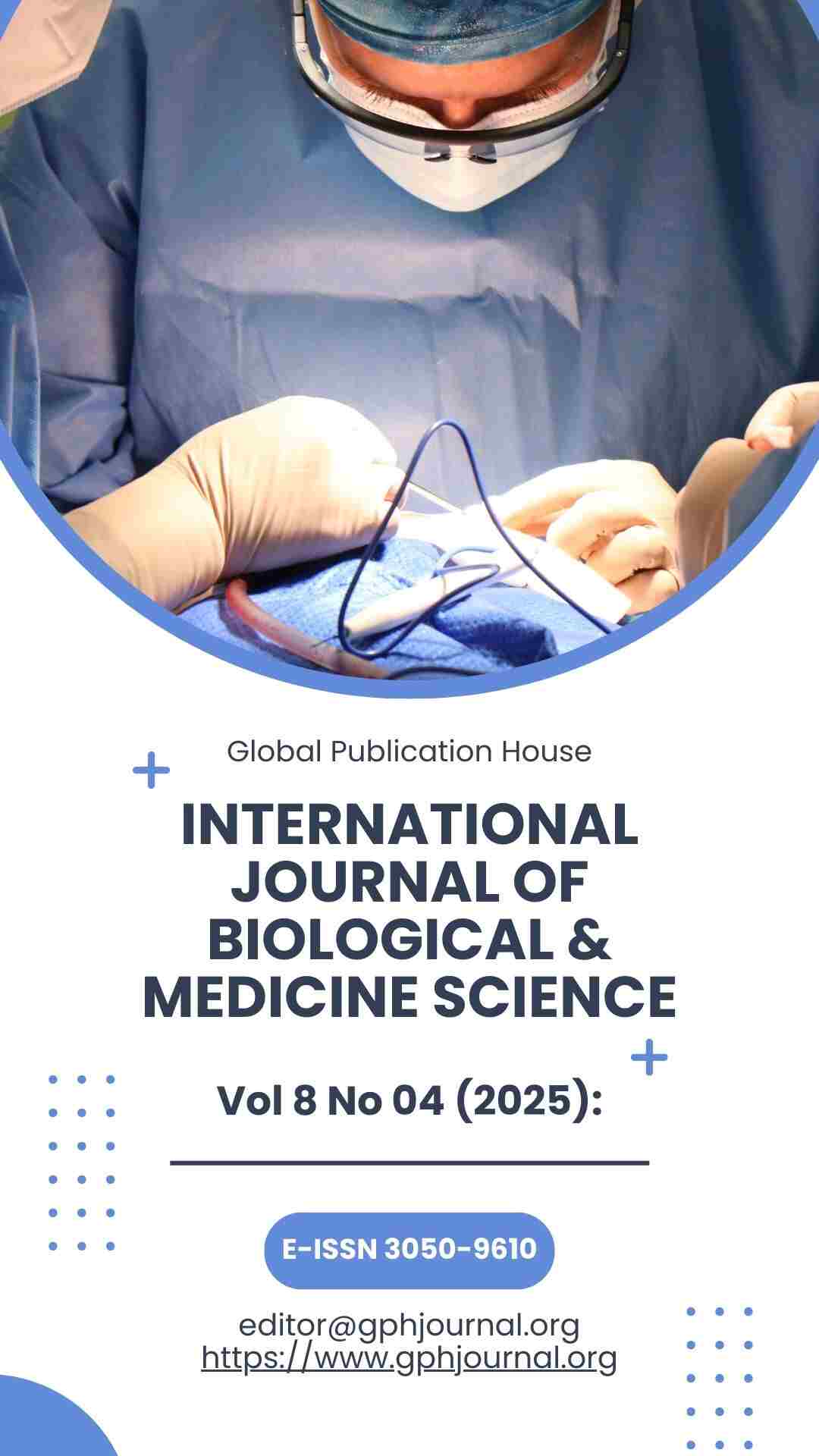Lateral Epicondylitis: Epidemiology, Occupational Risk Factors, and Public Health Implications
Abstract
Lateral epicondylitis, commonly known as tennis elbow, is a prevalent musculoskeletal disorder characterized by pain and tenderness on the lateral aspect of the elbow, often linked to repetitive strain of the extensor carpi radialis brevis tendon. While frequently associated with sports, it is more commonly observed in working-age adults engaged in repetitive, forceful, or awkward upper limb activities. The condition affects approximately 1–3% of the population annually, with a peak incidence in individuals aged 35–54 years. Occupational risk factors include repetitive wrist and forearm motions, forceful exertions, vibration exposure, and poor ergonomic conditions, particularly in manual labor and certain service industries. Lateral epicondylitis contributes significantly to work-related disability, lost productivity, and healthcare costs, underscoring its importance as a public health concern. Effective management involves a combination of conservative treatment, ergonomic workplace interventions, and early diagnosis. Public health strategies should focus on prevention through ergonomic education, job redesign, and occupational health surveillance to mitigate the personal and economic burden of this condition.
Downloads
References
Waseem M, Nuhmani S, Ram CS, Sachin Y. Lateral epicondylitis: a review of the literature. J Back Musculoskelet Rehabil. 2012;25:131–142. [PubMed] [Google Scholar]
Smidt N, Lewis M, VAN DER Windt DA, Hay EM, Bouter LM, Croft P. Lateral epicondylitis in general practice: course and prognostic indicators of outcome. J Rheumatol. 2006;33:2053–2059. [PubMed] [Google Scholar]
Rompe JD, Overend TJ, MacDermid JC. Validation of the Patient-rated Tennis Elbow Evaluation Questionnaire. J Hand Ther. 2007;20:3–10; quiz 11. [PubMed] [Google Scholar]
Poltawski L, Watson T. Measuring clinically important change with the patient rated tennis elbow evaluation. Hand Ther. 2011;16:52–57. [Google Scholar]
Stratford PW, Levy DR. Assessing valid change over time in patients with lateral epicondylitis at the elbow. Clin J Sports Med. 1994;4:88–91. [Google Scholar]
Heales LJ, Broadhurst N, Mellor R, Hodges PW, Vicenzino B. Diagnostic ultrasound imaging for lateral epicondylalgia: a case-control study. Med Sci Sports Exerc. 2014;46:2070–2076. [PubMed] [Google Scholar]
Pasternack I, Tuovinen EM, Lohman M, Vehmas T, Malmivaara A. MR findings in humeral epicondylitis. A systematic review. Acta Radiol. 2001;42:434–440. [PubMed] [Google Scholar]
Clarke AW, Ahmad M, Curtis M, Connell DA. Lateral elbow tendinopathy: correlation of ultrasound findings with pain and functional disability. Am J Sports Med. 2010;38:1209–1214. [PubMed] [Google Scholar]
Thomas D, Siahamis G, Marion M, Boyle C. Computerised infrared thermography and isotopic bone scanning in tennis elbow. Ann Rheum Dis. 1992;51:103–107. [PMC free article] [PubMed] [Google Scholar]
Berglund KM, Persson BH, Denison E. Prevalence of pain and dysfunction in the cervical and thoracic spine in persons with and without lateral elbow pain. Man Ther. 2008;13:295–299. [PubMed] [Google Scholar]
Binder AI, Hazleman BL. Lateral humeral epicondylitis--a study of natural history and the effect of conservative therapy. Br J Rheumatol. 1983;22:73–76. [PubMed] [Google Scholar]
Bot SD, van der Waal JM, Terwee CB, van der Windt DA, Bouter LM, Dekker J. Course and prognosis of elbow complaints: a cohort study in general practice. Ann Rheum Dis. 2005;64:1331–1336. [PMC free article] [PubMed] [Google Scholar]
Welsh P. Tendon neuroplastic training for lateral elbow tendinopathy: 2 case reports. J Can Chiropr Assoc. 2018 Aug;62(2):98-104. [PMC free article] [PubMed]
Kwapisz A, Prabhakar S, Compagnoni R, Sibilska A, Randelli P. Platelet-Rich Plasma for Elbow Pathologies: a Descriptive Review of Current Literature. Curr Rev Musculoskelet Med. 2018 Dec;11(4):598-606. [PMC free article] [PubMed
Patiño JM, Corna AR, Michelini A, Abdon I, Ramos Vertiz AJ. Elbow Posterolateral Rotatory Instability due to Cubitus Varus and Overuse. Case Rep Orthop. 2018;2018:1491540. [PMC free article] [PubMed]
Degen RM, Conti MS, Camp CL, Altchek DW, Dines JS, Werner BC. Epidemiology and Disease Burden of Lateral Epicondylitis in the USA: Analysis of 85,318 Patients. HSS J. 2018 Feb;14(1):9-14. [PMC free article] [PubMed]
Chevinsky JD, Newman JM, Shah NV, Pancholi N, Holliman J, Sodhi N, Eldib A, Naziri Q, Zikria BA, Reilly JP, Barbash SE, Urban WP. Trends and Epidemiology of Tennis-Related Sprains/Strains in the United States, 2010 to 2016. Surg Technol Int. 2017 Dec 22;31:333-338. [PubMed
Hassebrock JD, Patel KA, Makovicka JL, Chung AS, Tummala SV, Hydrick TC, Ginn JE, Hartigan DE, Chhabra A. Elbow Injuries in National Collegiate Athletic Association Athletes: A 5-Season Epidemiological Study. Orthop J Sports Med. 2019 Aug;7(8):2325967119861959. [PMC free article] [PubMed]
Kraushaar BS, Nirschl RP. Tendinosis of the elbow (tennis elbow). Clinical features and findings of histological, immunohistochemical, and electron microscopy studies. J Bone Joint Surg Am. 1999 Feb;81(2):259-78. [PubMed]
Nirschl RP, Pettrone FA. Tennis elbow. The surgical treatment of lateral epicondylitis. J Bone Joint Surg Am. 1979 Sep;61(6A):832-9. [PubMed]
Jeon JY, Lee MH, Jeon IH, Chung HW, Lee SH, Shin MJ. Lateral epicondylitis: Associations of MR imaging and clinical assessments with treatment options in patients receiving conservative and arthroscopic managements. Eur Radiol. 2018 Mar;28(3):972-981. [PubMed]
Ramage JL, Varacallo M. StatPearls [Internet]. StatPearls Publishing; Treasure Island (FL): Aug 28, 2023. Anatomy, Shoulder and Upper Limb, Wrist Extensor Muscles. [PubMed]
Thomas E, Cavallaro AR, Mani D, Bianco A, Palma A. The efficacy of muscle energy techniques in symptomatic and asymptomatic subjects: a systematic review. Chiropr Man Therap. 2019;27:35. [PMC free article] [PubMed]
Crone C. Reciprocal inhibition in man. Dan Med Bull. 1993 Nov;40(5):571-81. [PubMed]
Davidoff RA. Skeletal muscle tone and the misunderstood stretch reflex. Neurology. 1992 May;42(5):951-63. [PubMed]
Goodridge JP. Muscle energy technique: definition, explanation, methods of procedure. J Am Osteopath Assoc. 1981 Dec;81(4):249-54. [PubMed]
Roland H, Brown A, Rousselot A, Freeman N, Wieting JM, Bergman S, Mondal D. Osteopathic Manipulative Treatment Decreases Hospital Stay and Healthcare Cost in the Neonatal Intensive Care Unit. Medicines (Basel). 2022 Sep 21;9(10) [PMC free article] [PubMed]
Hensel KL, Roane BM, Chaphekar AV, Smith-Barbaro P. PROMOTE Study: Safety of Osteopathic Manipulative Treatment During the Third Trimester by Labor and Delivery Outcomes. J Am Osteopath Assoc. 2016 Nov 01;116(11):698-703. [PubMed]
Noll DR, Degenhardt BF, Morley TF, Blais FX, Hortos KA, Hensel K, Johnson JC, Pasta DJ, Stoll ST. Efficacy of osteopathic manipulation as an adjunctive treatment for hospitalized patients with pneumonia: a randomized controlled trial. Osteopath Med Prim Care. 2010 Mar 19;4:2. [PMC free article] [PubMed]
Racca V, Bordoni B, Castiglioni P, Modica M, Ferratini M. Osteopathic Manipulative Treatment Improves Heart Surgery Outcomes: A Randomized Controlled Trial. Ann Thorac Surg. 2017 Jul;104(1):145-152. [PubMed]
Gash MC, Kandle PF, Murray IV, Varacallo M. StatPearls [Internet]. StatPearls Publishing; Treasure Island (FL): Apr 1, 2023. Physiology, Muscle Contraction. [PubMed]
Jonas C. Musculoskeletal Therapies: Osteopathic Manipulative Treatment. FP Essent. 2018 Jul;470:11-15. [PubMed]
Waxenbaum JA, Lu M. StatPearls [Internet]. StatPearls Publishing; Treasure Island (FL): Jul 25, 2022. Physiology, Muscle Energy. [PubMed]
Thomas E, Cavallaro AR, Mani D, Bianco A, Palma A. The efficacy of muscle energy techniques in symptomatic and asymptomatic subjects: a systematic review. Chiropr Man Therap. 2019;27:35. [PMC free article] [PubMed]
Task Force on the Low Back Pain Clinical Practice Guidelines. American Osteopathic Association Guidelines for Osteopathic Manipulative Treatment (OMT) for Patients With Low Back Pain. J Am Osteopath Assoc. 2016 Aug 01;116(8):536-49. [PubMed]
Nandi S, Maschke S, Evans PJ, Lawton JN. The Stiff Elbow. Hand (NY) 2009;4(4):368–79. [PMC free article] [PubMed] [Google Scholar]
Muller AM, Sadoghi P, Lucas R, et al.. Effectiveness of bracing in the treatment of nonosseous restriction of elbow mobility: A systematic review and meta-analysis of 13 studies. J Shoulder Elbow Surg 2013;22(8):1146–52. [PubMed] [Google Scholar]
Parmar S, Shyam A, Sabnis S, Sancheti P. The effect of isolytic contraction and passive manual stretching on pain and knee range of motion after hip surgery: A prospective, double-blinded, randomized study. Hong Kong J Physiother 2011;29:25–30. [Google Scholar]
Kisner C, Colby L. Therapeutic Exercises: Foundation and Techniques. 6th ed. New Delhi, India: Jaypee Brothers, 2012:72–3. [Google Scholar]
Issack PS, Egol KA. Posttraumatic contracture of the elbow: Current management issues. Bull Hosp Jt Dis 2006;63(3–4):129–36. [PubMed] [Google Scholar]
Steinitz A, Sailer J, Rikli D. Distal humerus fractures: A review of current therapy concepts. Curr Rev Musculoskelet Med 2016;9(2):199–206. [PMC free article] [PubMed] [Google Scholar]
Lee SK, Kim KJ, Park KH, Choy WS. A comparison between orthogonal and parallel plating methods for distal humerus fractures: A prospective randomized trial. Eur J Orthop Surg Traumatol 2014;24(7):1123–31. [PubMed] [Google Scholar]
Roderick J, Michael L, Robert J, Melvin P. Posttraumatic elbow stiffness: Evaluation and management. J Am Acad Orthop Surg 2002;10:106–16. [PubMed] [Google Scholar]
Mathew PK, Athwal GS, King GJ. Terrible triad injury of the elbow: Current concepts. J Am Acad Orthop Surg 2009;17(3):137–51. [PubMed] [Google Scholar]
David R, Jesse J, Job D. The effectiveness of static progressive splinting for post-traumatic elbow stiffness. J Orthop Trauma 2006;20(6):400–4. [PubMed] [Google Scholar]
Edward S. Elbow passive motion rehabilitation utilizing a continuous passive motion device following surgical release, manipulation under anesthesia, or post stable fracture: A review. Kinex Medical. 2006. [Google Scholar]
Mac Dermid JC, Vincent JI, Kieffer L, et al.. A survey of practice patterns for rehabilitation post elbow fracture. Open Orthop J 2012;6:429–39. [PMC free article] [PubMed] [Google Scholar]
Fryer G. Muscle energy technique: An evidence-informed approach. Int J Osteopath Med 2011;14(1):3–9. [Google Scholar]
Chaitow L. Muscle Energy Techniques. 4th ed. Edinburgh: Churchill Livingstone; 2013:94, 243,245,249,250. [Google Scholar]
Sherrington CS. On reciprocal innervation of antagonistic muscles. Proc R Soc Lond [Biol] 1907;79B:337. [Google Scholar]
Fryer G, Ruszkowski W. The influence of contraction duration in muscle energy technique applied to the atlanto-axial joint. Int J Osteopath Med 2004;7(2):79–84. [Google Scholar]
Johns RJ, Wright V. Relative importance of various tissues in joint stiffness. J Appl Physiol 1962;17:824–8. [Google Scholar]
Ylinen J. Stretching Therapy: For Sports and Manual Therapies. Section 1 — Stretching Theory. 1st ed. Oxford, United Kingdom: Churchill Livingstone, 2008:22–102. [Google Scholar]
Pierce TP, Issa K, Gilbert BT, et al. A systematic review of tennis elbow surgery: open versus arthroscopic versus percutaneous release of the common extensor origin. Arthroscopy. 2017;33(6):1260–8. e2. doi: 10.1016/j.arthro.2017.01.042. [PubMed] [Google Scholar]
Author(s) and co-author(s) jointly and severally represent and warrant that the Article is original with the author(s) and does not infringe any copyright or violate any other right of any third parties, and that the Article has not been published elsewhere. Author(s) agree to the terms that the GPH Journal will have the full right to remove the published article on any misconduct found in the published article.























